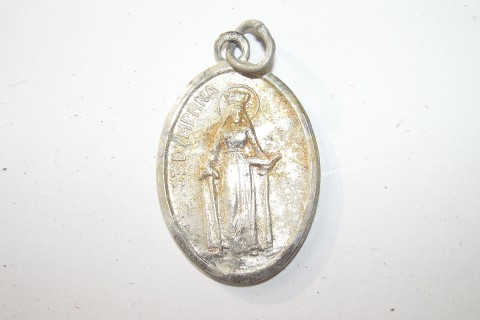St. Dymphna and her legacy of care
How the patron saint of mental illness has shown up in my brother’s life

It was dusk on a beautiful August evening, 1983. I exited an upscale Chicago hotel with my girlfriend, whose employer had just hosted a gala dinner. Dressed to the nines, we strolled leisurely down the Magnificent Mile of Michigan Avenue, lined with high-end retail shops. Walking past the historic Chicago Water Tower, we stopped and waited for the light to turn green.
Out of the corner of my eye, I spotted a man rummaging through a garbage can in search of food. I did a double take, because he looked a bit like my brother. “Jeff,” I said, “is that you?”
He lifted his head and looked straight at me, a nasty-looking Styrofoam food container in his hand. “Hi, Pete,” he said with blank surprise.
I hadn’t seen Jeff for three years, not since his life had descended into the darkness of paranoid schizophrenia and the streets had become his home. He looked awful. I introduced him to Susan, who, as it turns out, I would marry the following year. Making conversation with him was difficult, but we traded a few pleasantries before he turned north and we headed south.
Read our latest issue or browse back issues.
Here were two brothers who shared a happy childhood home, meeting on one of the most famous streets in the world, living incomprehensibly dissimilar lives. Every detail of that chance encounter remains etched in my memory. The garbage can still sits on that corner, a kind of sacred relic that calls out my name every time I walk by.
Jeff’s precarious life came to my mind recently while watching a documentary on Geel, Belgium. For over 700 years, the small city has been welcoming people with mental illness, many of whom arrive with severe disorders. Most of the townspeople don’t look at these individuals as psychiatric patients so much as family members. They call them boarders or guests. Families take them into their homes in something akin to a foster care program for adults. “To us, this is normal,” said Christel Syen, a store owner. “We all grew up with boarders. We don’t know any other way.”
A 14th-century church in Geel is dedicated to Dymphna, the patron saint of the mentally afflicted. According to legend, this seventh-century Irish princess, who fled to Geel to escape her incestuous father, used her considerable resources to build a hospital for the poor and sick. Versions of the legend suggest she offered personal care for mentally tormented individuals shunned by medieval society.
For centuries, scholars have been fascinated by the hospitable attitude of the Geel citizenry toward those with chronic mental illness. Mental differences are routinely accepted; behaviors stigmatized and feared elsewhere are normalized. It’s the ultimate community-based model for mental health. A psychiatric hospital in town provides higher-level care for those who are violent or experiencing a crisis. Today, nearly 300 boarders live with more than 200 families.
As for my brother Jeff, he’s now living a reasonably stable life. Thanks to the shepherding of a modern Dymphna, he eventually landed in a supportive housing environment designed exclusively for individuals with severe mental illness. He may not be a boarder in a private home. But he benefits from attentive caseworkers who treat him like family, people who don’t pathologize him for his grave dysfunctions. They accept him as he is, which may be one of the finest gifts any of us could ever ask for.
A version of this article appears in the print edition under the title “St. Dymphna’s care.”







